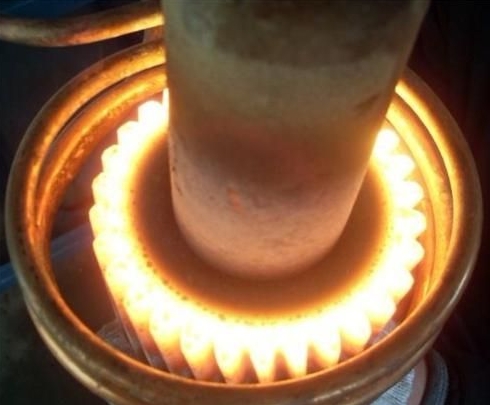- 18
- Mar
The difference between high frequency quenching machine and laser quenching
இடையே உள்ள வேறுபாடு உயர் அதிர்வெண் தணிக்கும் இயந்திரம் and laser quenching
1. Laser quenching technology and use of laser quenching technology is the process of using the concentrated laser beam to rapidly heat the surface of the steel material, causing it to undergo phase transformation and forming a martensite hardened layer. Laser quenching has high power density, fast cooling speed, and does not require cooling media such as water or oil. It is a cleaning and fast quenching technology. Compared with induction quenching, flame quenching and carburizing quenching skills, laser quenching has uniform hardened layer, high hardness (usually 1-3HRC higher than induction quenching), small workpiece deformation, simple control of heating layer depth and heating track, and easy to complete automation. It is not necessary to design corresponding induction coils according to different part sizes like induction hardening, and the processing of large parts does not need to be restricted by the size of the furnace during chemical heat treatment such as carburizing and quenching, so induction hardening is gradually being replaced in many industrial fields. and traditional techniques such as chemical heat treatment. It is particularly important that the deformation of the workpiece before and after laser quenching can be ignored, so it is especially suitable for the surface treatment of parts requiring high precision.
2. The depth of the high-frequency quenching machine is different according to the composition, size and shape of the parts and the parameters of the laser technology, usually between 0.3 and 2.0 mm. Quenching the tooth surfaces of large gears and the journals of large shaft parts, the surface roughness is basically unchanged, and the needs of practical working conditions can be satisfied without subsequent machining. Laser melting and quenching technology is a technical process in which the surface of the substrate is heated to above the melting temperature by a laser beam, and the surface of the molten layer is rapidly cooled and crystallized due to the thermal conduction and cooling inside the substrate. The obtained fusion quenching arrangement is very fine, and the arrangement along the depth direction is the melting-condensing layer, the phase-change hardening layer, the heat-affected zone and the substrate.
- Compared with the laser quenching layer, the high-frequency quenching machine has deeper hardening depth, higher hardness and very good wear resistance. High-frequency quenching machine has been successfully used to strengthen the appearance of wearing parts in metallurgical industry, mechanical industry and petrochemical industry, especially in improving the service life of wearing parts such as rolls, guides, gears, shearing blades, etc. Significantly, great economic and social benefits have been achieved. In recent years, it has also been used more and more widely in strengthening the appearance of parts such as molds and gears.

